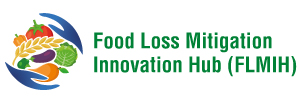
Project Description
In 2003, as much as 75% of tomatoes produced in Sri Lanka could have ended up in waste along the supply chain, mainly due to losses incurred during transportation. The inherent perishability of fresh tomatoes, combined with inappropriate packaging, transportation, distance to the markets, and inappropriate handling of the produce are the primary sources of losses incurred. After 20 years, while significant improvements have been made, avoidable losses still occur. Appropriate packaging and produce handling that maintains food quality and ensure consumer safety can also improve fair operator returns. Traditionally, smallholder farmers and collectors transported their produce in mesh sacks or gunny (hessian) bags. However, overfilling these bags leads to excessive crushing, abrasion and peel damage, accelerating the build-up of heat inside the pack, which in turn increases ethylene accumulation, accelerating the ripening and decaying processes during transport and storage. However, in more competitive markets, advanced packaging and transit storage practices are commonly used, enhancing value and profits.
Plastic crates for transporting fruits and vegetables have been introduced as a national policy by the Ministry of Trade, Commerce and Cooperatives in 2011, received island-wide protests against it. Since then, the adoption remains patchy. Considering these challenges, it is imperative to explore the reasons for non-adoption. This study considers the cost-effectiveness of packaging options within the tomato supply chain to draw insights into possible remedies.
Key Findings
Policy Implications
- The findings of the study emphasize the need for promoting the adoption of foldable and nestable plastic crates with lids by;
- Lowering the acquisition costs and effectively communicating the benefits to the supply chain actors.
- Managing the system through marking the crates with unique farmer IDs and offering price discounts for new purchases in exchange for returning used crates.
- Even though there is a potential to minimize losses in wooden boxes, they must adhere to proper standards to achieve optimal results.
Publication
Malaviarachchi, M.A.C.D (2024). Costs of the Commonly Used Packaging Methods in Tomato Supply Chain in Sri Lanka. FLM Briefing No. 7. ACIAR Food Loss Mitigation Project. Institute of Policy Studies of Sri Lanka. Colombo.
